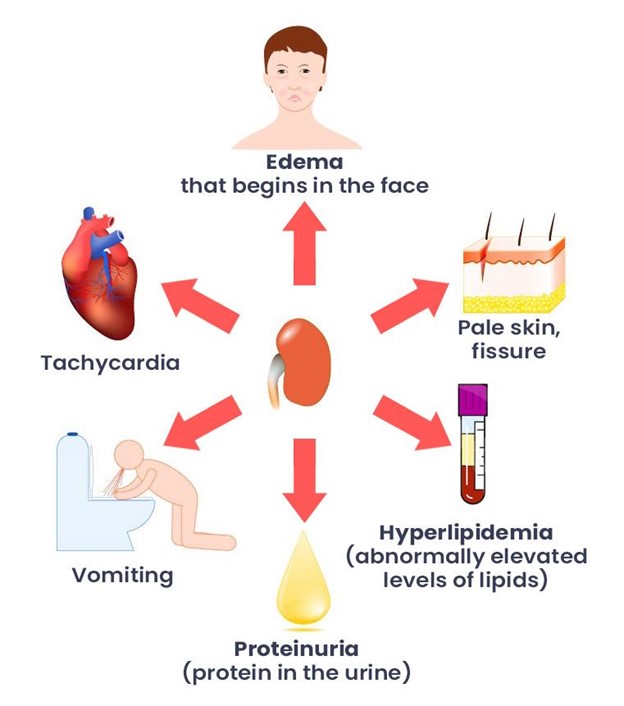A nurse is caring for a child who has acute glomerulonephritis. Which of the following actions is the nurse's priority?
Maintain a saline-lock.
Check the child's day weight
Place the child on a no-salt-added diet.
Educate the parents about potential complications
The Correct Answer is B
A. Maintain a saline-lock:
Maintaining a saline lock is important for potential intravenous access, but it is not the most urgent priority compared to actions that directly monitor the child's condition and help manage the disease.
B. Check the child's daily weight:
Monitoring daily weight is crucial in acute glomerulonephritis, as it helps assess fluid balance and detect early signs of fluid retention or worsening kidney function, which are key concerns in this condition. This makes it a priority action.
C. Place the child on a no-salt-added diet:
While dietary modifications can be important for managing various health conditions, including kidney issues, this is not the top priority in this situation. Reducing salt intake can help manage fluid retention, but it is not the nurse's priority action at this moment.
D. Educate the parents about potential complications:
Patient education is crucial, especially in chronic conditions, but in this acute care scenario, the nurse's immediate priority is to address the child's needs. Educating parents about potential complications should be done, but it's not the most immediate action.
Nursing Test Bank
Naxlex Comprehensive Predictor Exams
Related Questions
Correct Answer is D
Explanation
A. Using a suppository for bowel movement is a common approach for managing bowel function in people with paralysis and is appropriate.
B. Carrying a water bottle to stay hydrated is important, especially since individuals with paralysis may be at increased risk of urinary tract infections. Adequate hydration is beneficial.
C. Doing wheelchair exercises while watching TV is a proactive way to maintain muscle tone and overall health, which is crucial for individuals with paralysis.
D. "I only need to catheterize myself twice every day!"
Explanation: In the context of spina bifida and paralysis from the waist down, catheterization is often required for bladder management. Individuals with this condition often experience urinary retention and require intermittent catheterization to empty their bladder. However, "twice every day" is not usually sufficient for someone with paraplegia. Adequate catheterization frequency is crucial to prevent urinary retention, infections, and other complications.
Correct Answer is C
Explanation
A) Smokey brown urine:
This finding is not typically associated with nephrotic syndrome. Smokey brown urine might indicate the presence of blood in the urine, which can be seen in conditions such as hematuria or certain kidney infections.
B) Polyuria:
Polyuria refers to excessive urination and is not a primary characteristic of nephrotic syndrome. However, children with nephrotic syndrome may have decreased urine output due to the loss of fluid and proteins through the damaged kidney filters.
C) Facial edema:
Facial edema (swelling of the face) is a hallmark of nephrotic syndrome. The loss of albumin in the urine results in a decrease in oncotic pressure (a force that helps keep fluid in the blood vessels), leading to fluid accumulation in the interstitial spaces, including the face, ankles, and abdomen.
D) Hypertension:
Hypertension (high blood pressure) is not a typical finding of nephrotic syndrome itself. However, it's possible for kidney damage to lead to secondary hypertension. In nephrotic syndrome, low levels of albumin can trigger the renin-angiotensin-aldosterone system, which can contribute to increased blood pressure.

Whether you are a student looking to ace your exams or a practicing nurse seeking to enhance your expertise , our nursing education contents will empower you with the confidence and competence to make a difference in the lives of patients and become a respected leader in the healthcare field.
Visit Naxlex, invest in your future and unlock endless possibilities with our unparalleled nursing education contents today
Report Wrong Answer on the Current Question
Do you disagree with the answer? If yes, what is your expected answer? Explain.
Kindly be descriptive with the issue you are facing.
